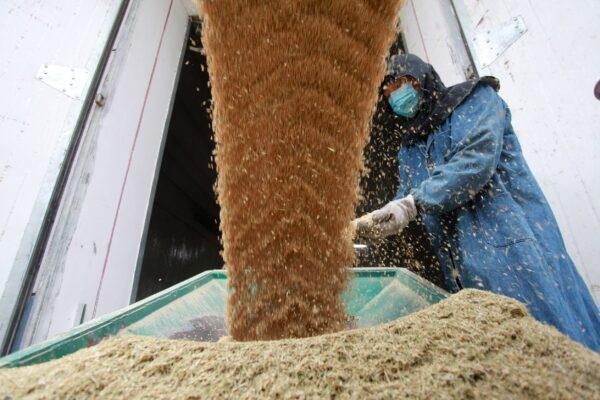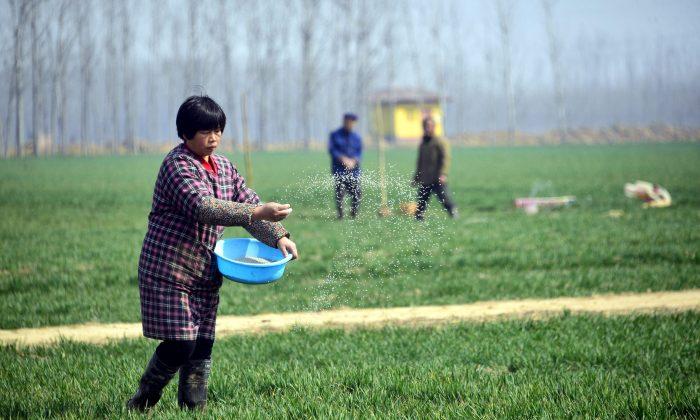News Analysis
Last November, a wave of panic buying and hoarding was spurred by a message from China’s Ministry of Commerce, instructing local governments to stabilize food supply and prices. Now, as the war in Ukraine is threatening wheat and fertilizer exports, China braces for a food crisis, while Americans can expect higher prices at the grocery store.
Countries around the world rely on grain from Ukraine. Ukraine exports 15 percent of the world’s grain, 80 percent of its sunflower oil, and is the fourth largest exporter of maize. The fighting in Ukraine is separating the producers from the Black Sea coastline, preventing exports.
Hunger is already being felt in East Africa and is expected to spread to other nations. Egypt, Tunisia, and Algeria have already begun to experience a shortage of wheat. Egypt is the world’s largest importer of wheat, obtaining 60 percent from Russia and 40 percent from Ukraine.
In anticipation of greater shortages, regional wheat prices have skyrocketed to historical levels, about 40 percent higher than they were before the invasion. French Agriculture Minister Julien Denormandie has urged the European Union to produce more wheat, to make up for the shortfall.
The Ukraine war has also driven natural gas prices to record highs. Consequently, fertilizer producers have had to cut their production of ammonia and urea by as much as 45 percent. A worldwide shortage of fertilizer could trigger a famine. Egypt, Indonesia, Algeria, as well as other nations have tightened exports of food. Hungary and Russia are among nations that are prohibiting grain exports. China was one of the first countries to ban fertilizer exports, since last October. Since then, Russia, Ukraine, and other countries have also banned the export of fertilizer.
Grain exports from Ukraine and Russia will be down, meaning that China and other countries are scrambling to increase their own production. Meanwhile, a decrease in the availability of fertilizer will further drive up grain prices.
China imports more than half of its potash, a key nutrient used in agricultural production. Fifty-three percent of China’s potassium is imported from Belarus and Russia. Lithuania and Ukraine have banned the transport of Belarusian potash through their territory. This comes as a blow to China, which was already facing issues of food security.

In 2020, China’s food self-sufficiency rate fell to 76.8 per cent. One reason is the lack of productive farmland. China accounts for about one-fifth of the world’s population, but only about 7 percent of the world’s arable land. Another issue is logistics. It is estimated that 5 million metric tons of China’s grain reserves are wasted each year, as a result of substandard storage and transport methods. China is particularly vulnerable to food shortages because of declining domestic soybean and oil crop output. As a result, China imports 80 percent of its soybeans.
To avert a crisis, Chinese leader Xi Jinping instructed the populace not to waste food. China increased its stockpile of fertilizer in 2020. A year later, Beijing passed the anti-food waste law. Now, fertilizer exports are completely banned.
The United States only uses about 10 percent of the world’s fertilizer, while producing 35 percent of the world’s corn and soybeans. Normally, the United States imports 15 percent to 20 percent of its fertilizer from Morocco and Russia. If these imports disappear, they will have to be replaced with more expensive domestic fertilizer.
Many of the disruptions in food and fertilizer production and distribution in North America have been caused by COVID-19 restrictions and mandates on workers and drivers. Fortunately, 60 percent of the U.S. ammonia production capacity is in Louisiana, Oklahoma, and Texas—states with low restrictions.
The price of U.S. fertilizer has been driven up by increases in natural gas prices, which in North America has risen 150 percent. Europe is being hit much harder as the cost of natural gas is up around 500 percent, and many fertilizer plants have shut down due to increased costs and tighter environmental regulations.
Higher global prices for food and fertilizer will be an incentive for American producers to export, which will raise the aggregate price of these commodities in the United States. Americans can expect to see food prices increase, but people in China and other parts of the world could be facing real shortages.
Views expressed in this article are opinions of the author and do not necessarily reflect the views of The Epoch Times.





